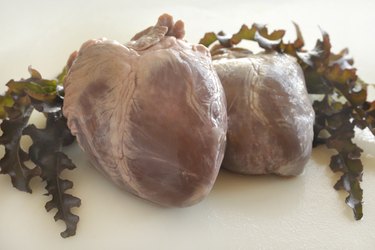
A pig's heart is one of the animal's most active organs, so it's quite lean. It has a rich, dense flavor, especially when it's fresh and the fat is trimmed away ahead of time. Once it's ready, draw out that flavor by cooking it one of two ways: slow and low or fast and flashy. Either way, you can use it on a stew or a salad or simply serve it on toast.
Grilling
Video of the Day
Step 1
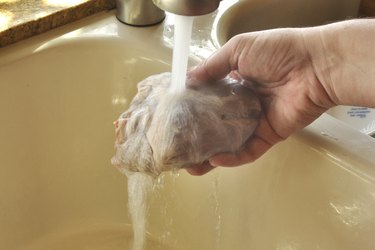
Rinse the heart in cool water to remove any dirt or blemishes. Trim off any membranes and as much fat as possible from the outside.
Video of the Day
Step 2
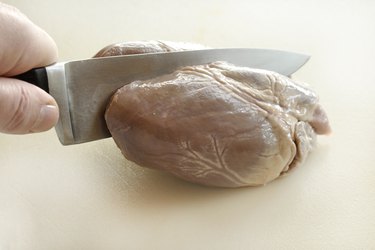
Cut the heart down the middle, but don't slice it all the way through, utilizing a method often called the "butterfly" technique. It should lay flat.
Step 3
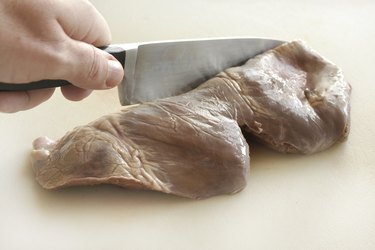
Cut away any connective tissue and fat from the inside and outside of the heart. This material is easy to spot because it is whiter than the muscle of the heart.
Step 4
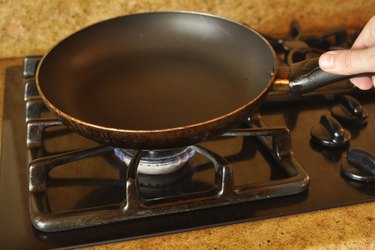
Preheat a frying pan or a grill to medium.
Step 5
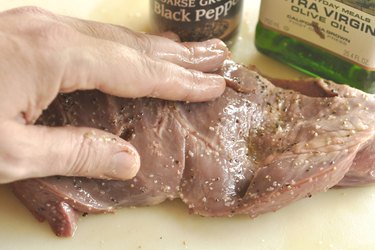
Season both sides of the heart with salt and pepper to taste along with other spices that go well with pork, such as parsley, thyme and rosemary. Douse it with about one teaspoon of olive oil per pound of heart. Rub all of the ingredients into the meat with your hands.
Step 6
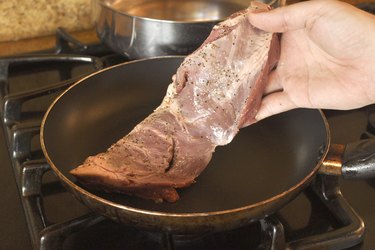
Lay the heart flat in the frying pan or on the grill and place a brick on top. If you don't have a brick, use two or three frying pans stacked on top instead.
Step 7
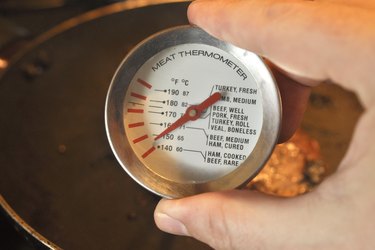
Grill the heart for about 8 minutes per side or until the internal temperature reaches at least 145 degrees Fahrenheit.
Step 8
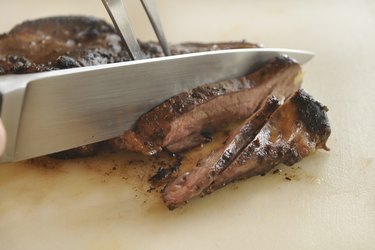
Allow the heart to rest for at least 3 minutes and then slice it in thin strips for salads and sandwiches or chunks for appetizers and casseroles.
Braising
Step 1

Rinse the heart in cool water to remove any dirt or blemishes.
Step 2
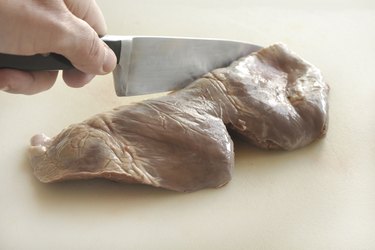
Slice the heart down the middle and cut away any connective tissue and as much fat as possible. This material is easy to spot because it is whiter than the muscle of the heart.
Step 3
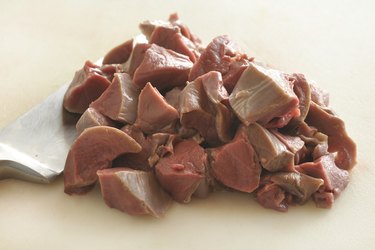
Slice the heart into 1-inch cubes.
Step 4

Add the cubes to a resealable plastic bag along with salt and pepper to taste, 3 tablespoons of olive oil per 1 pound of heart, and seasonings to taste, such as parsley, thyme and rosemary. You can also add a few cloves of diced garlic and 1 cup of red wine per pound of heart.
Step 5
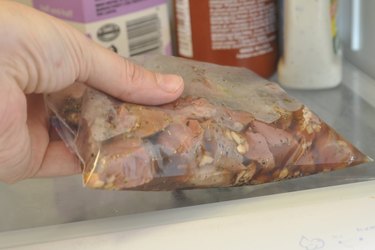
Move the heart cubes around in the bag so they are covered in the marinade and leave the bag in the fridge overnight.
Step 6
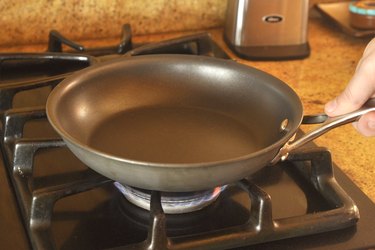
Preheat a frying pan to medium-high.
Step 7
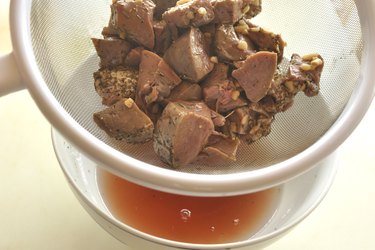
Separate the liquid from the heart cubes using a strainer. Keep the liquid in a bowl and set it aside.
Step 8
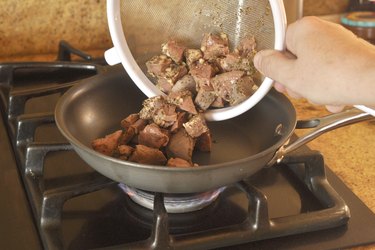
Add the heart cubes to the frying pan and brown them on all sides.
Step 9
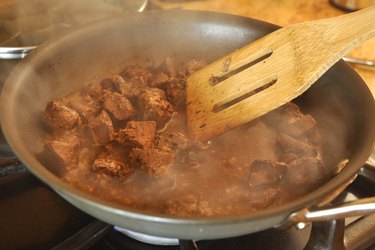
Add the leftover marinade to the pan, scrape any brown bits off the bottom of the pan with a wooden spoon, and stir the liquid and heart cubes.
Step 10
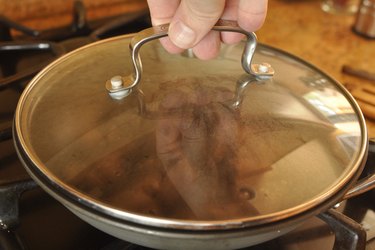
Reduce the temperature to medium low, cover the pan and let the heart braise for 25 minutes per pound of pig heart.
Step 11
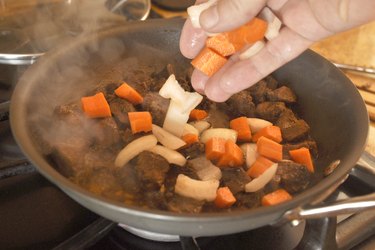
Add approximately the same amount of chopped carrots and chopped onions to the pan as heart cubes. Cover again and cook for another half-hour or until the carrots are tender.
Step 12
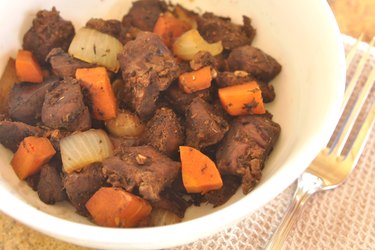
Strain the carrots, onions and pig heart cubes and serve them right away.
Things You'll Need
Knife
Salt
Pepper
Olive oil
Frying pan
Brick
Meat thermometer
Garlic
Red wine
Strainer
Bowl
Wooden spoon
Carrots
Onion
Tip
Refrigerate whole, grilled pig heart and then slice it in thin strips for cold salads or on its own.
Add the braised heart cubes along with the carrots, onions and liquid to a stew.
Warning
Refrigerate whole, grilled pig heart for up to five days; freeze it for up to six months.
Refrigerate the braise for no more than four days; freeze it for up to three months.